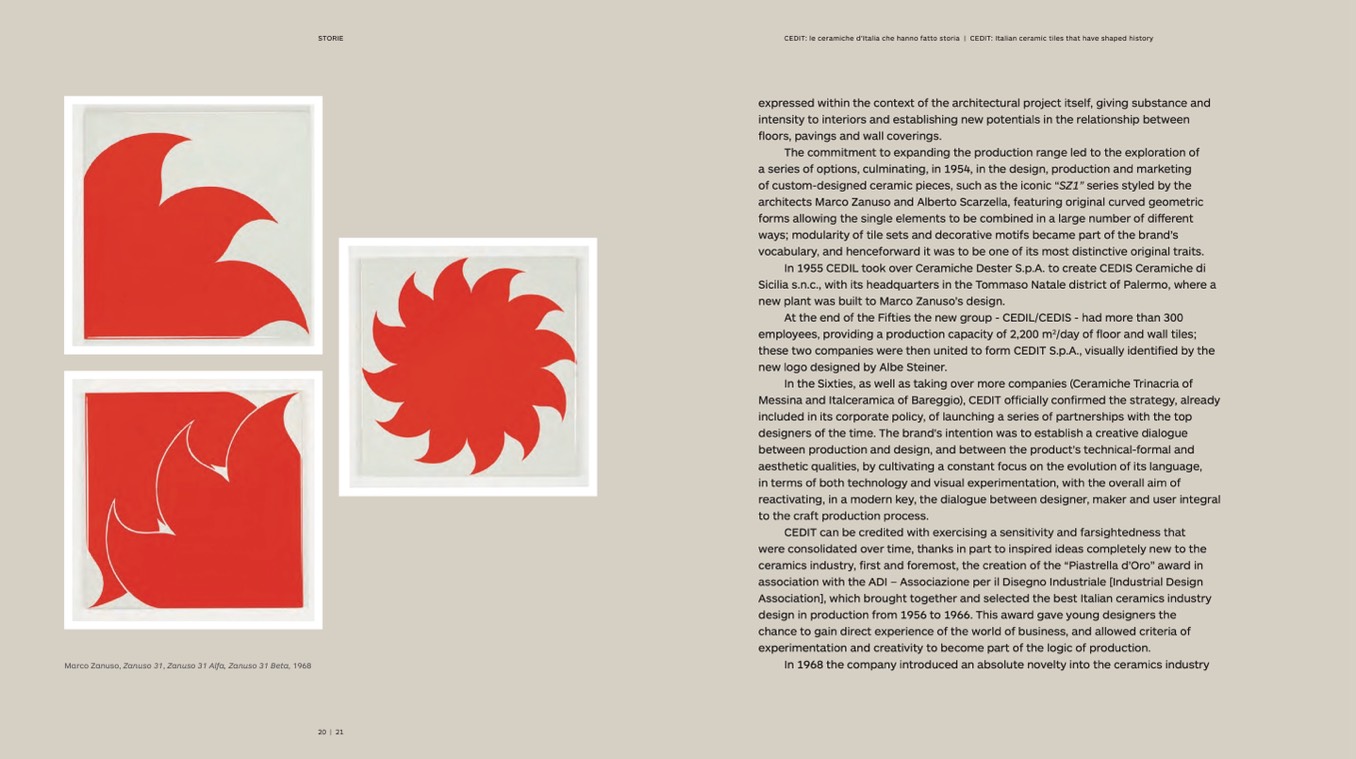
Marco Zanuso, Zanuso 31, Zanuso 31 Alfa, Zanuso 31 Beta, 1968
expressed within the context of the architectural project itself, giving substance and
intensity to interiors and establishing new potentials in the relationship between
floors, pavings and wall coverings.
The commitment to expanding the production range led to the exploration of
a series of options, culminating, in 1954, in the design, production and marketing
of custom-designed ceramic pieces, such as the iconic “SZ1” series styled by the
architects Marco Zanuso and Alberto Scarzella, featuring original curved geometric
forms allowing the single elements to be combined in a large number of different
ways; modularity of tile sets and decorative motifs became part of the brand’s
vocabulary, and henceforward it was to be one of its most distinctive original traits.
In 1955 CEDIL took over Ceramiche Dester S.p.A. to create CEDIS Ceramiche di
Sicilia s.n.c., with its headquarters in the Tommaso Natale district of Palermo, where a
new plant was built to Marco Zanuso’s design.
At the end of the Fifties the new group - CEDIL/CEDIS - had more than 300
employees, providing a production capacity of 2,200 m
2
/day of floor and wall tiles;
these two companies were then united to form CEDIT S.p.A., visually identified by the
new logo designed by Albe Steiner.
In the Sixties, as well as taking over more companies (Ceramiche Trinacria of
Messina and Italceramica of Bareggio), CEDIT officially confirmed the strategy, already
included in its corporate policy, of launching a series of partnerships with the top
designers of the time. The brand’s intention was to establish a creative dialogue
between production and design, and between the product’s technical-formal and
aesthetic qualities, by cultivating a constant focus on the evolution of its language,
in terms of both technology and visual experimentation, with the overall aim of
reactivating, in a modern key, the dialogue between designer, maker and user integral
to the craft production process.
CEDIT can be credited with exercising a sensitivity and farsightedness that
were consolidated over time, thanks in part to inspired ideas completely new to the
ceramics industry, first and foremost, the creation of the “Piastrella d’Oro” award in
association with the ADI – Associazione per il Disegno Industriale [Industrial Design
Association], which brought together and selected the best Italian ceramics industry
design in production from 1956 to 1966. This award gave young designers the
chance to gain direct experience of the world of business, and allowed criteria of
experimentation and creativity to become part of the logic of production.
In 1968 the company introduced an absolute novelty into the ceramics industry
STORIE
CEDIT: le ceramiche d’Italia che hanno fatto storia | CEDIT: Italian ceramic tiles that have shaped history
20 | 21

